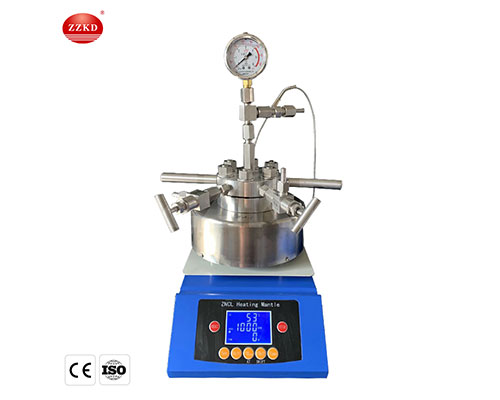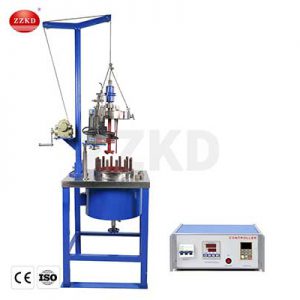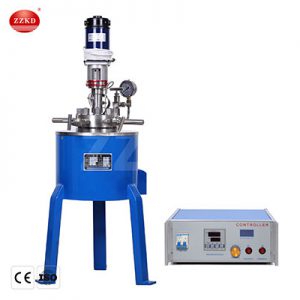Lab Scale High Pressure Reactorin
TGYF lab scale high pressure reactor is suitable for gas-liquid, liquid-liquid, liquid-solid-gas and other reaction equipment. This device mainly adopts static sealing structure, which can completely solve the leakage problem of stirring, and make the whole medium Work with the stirring parts in an absolutely sealed state. It is widely used in colleges and universities, environmental protection, biochemistry, medical treatment, scientific research and other fields.
Lab Scale High Pressure Reactor Features:
- The micro-reactor is compact in size, and the structure of the whole machine is simple and reliable.
- The LCD screen displays the speed and temperature, and the parameters can be adjusted by pressing the buttons, which is more convenient to use, more accurate in value, and more beautiful in appearance.
- Equipped with pressure gauge, explosion-proof device, air intake valve, sampling valve and temperature probe as standard, it is convenient to realize micro-reaction test.
- The kettle body and the heater can be quickly separated, and the kettle body can be cooled quickly.
- Temperature and rotational speed are digitally displayed, which is convenient, quick and controllable.
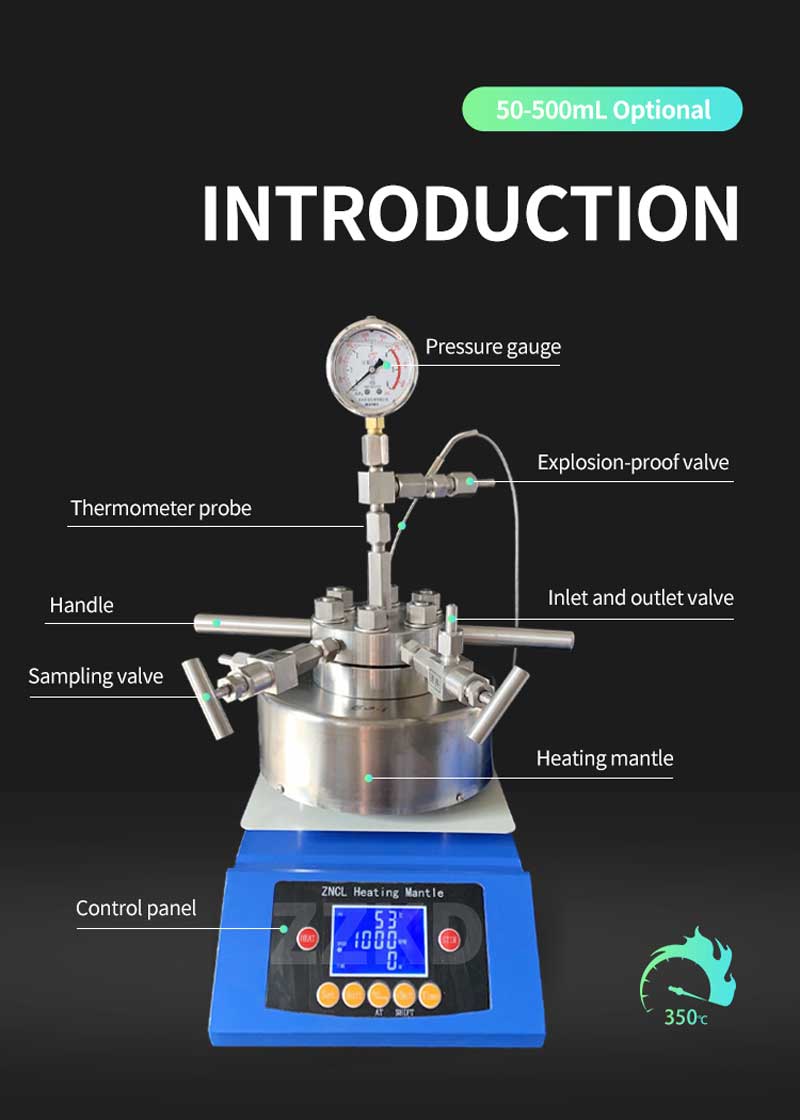
Lab Scale High Pressure Reactor Structure
Stirring method: The magnetic force in the kettle drives the magnetic sub-stirring, there is no problem of shaft seal leakage and maintenance, ensuring no leakage, no exposed rotating parts, and the test is safer.
Gas inlet valve: gas inlet needle valve.
Sampling valve: It is convenient to take samples at any time during the reaction and analyze the reaction process.
Exhaust valve: It is convenient to vacuum the system and replace the gas before the reaction, and it can be used as a vent valve after the reaction.
Pressure gauge: monitor the reaction temperature in the kettle in real time.
Temperature probe: go deep into the reactor body to monitor the reaction temperature.
Heating unit: Modular heating. Fast heating, precise control, and digital display on the screen.

lab scale high pressure reactor Application:
Catalyst screening and optimization:
High-pressure reactors are often used in the screening and optimization of catalysts for various chemical reactions. Researchers can use these reactors to study the effect of pressure, temperature, and reactant concentrations on catalyst performance.
Hydrogenation and oxidation reactions:
High-pressure reactors are commonly used for hydrogenation and oxidation reactions. These reactions can be used to modify the properties of organic compounds or to synthesize new materials.
Polymerization:
High-pressure reactors are also used in polymerization reactions, where high pressure is needed to promote the reaction and yield high-quality polymer products.
Material synthesis:
High-pressure reactors can be used to synthesize a variety of materials, including nanoparticles, thin films, and composites.
Supercritical fluid extraction:
High-pressure reactors are sometimes used for supercritical fluid extraction, which is a process used to extract compounds from natural products such as plants and herbs.
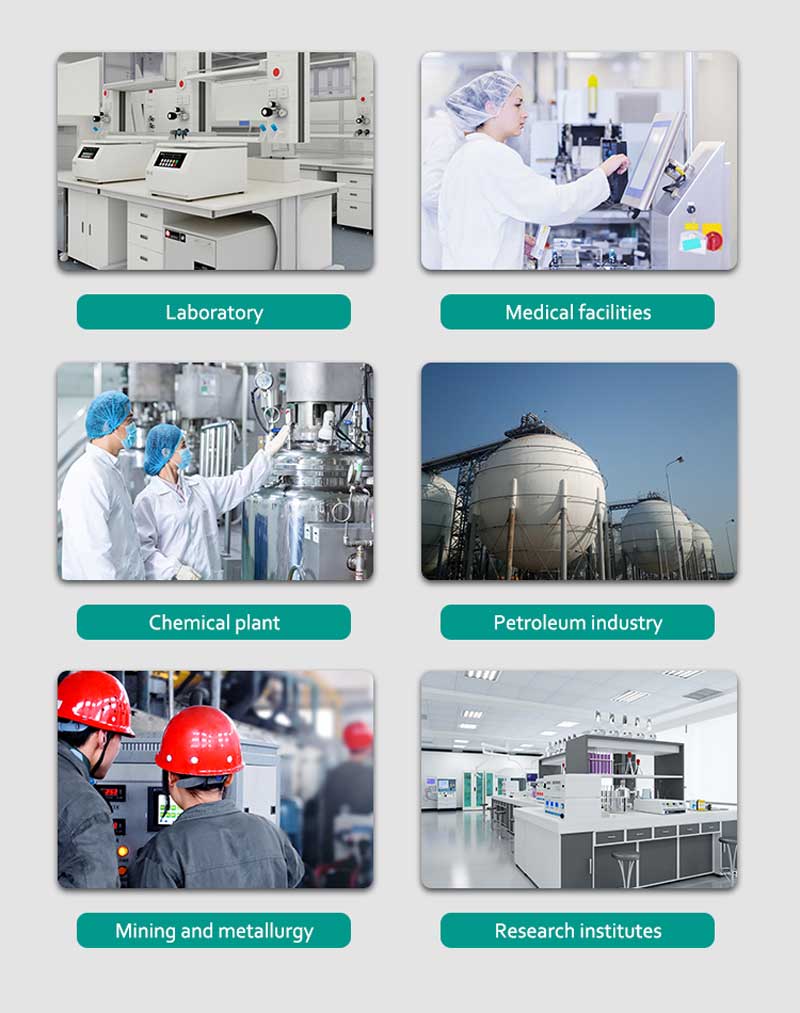
Lab Scale High Pressure Reactor Operation:
- 【Setting】key: It can set or view the temperature setting value, speed setting value and its internal parameters.
- 【Time】key: to set the running time. After the timer is over, click the [Heating] button to restart the temperature control operation.
- 【Heating】key: heating key.
- [Increase/Switch] key: In the non-setting state, press and hold this key for 3 seconds to switch between the two temperature displays and save it automatically; in the setting state, click this key to increase the set value, long Press this key to continuously increase the set value.
- [Decrease/Auto-tuning] key: In the non-setting state, click this key for 6 seconds to enter the temperature self-tuning selection state; in the setting state, click this key to decrease the set value, long press this key to Continuously decrements the set value.
- [Shift] key: In the setting state, click this key to make the set value shift and flash to modify.
- [Stirring] key: Stirring (speed) switch key.

